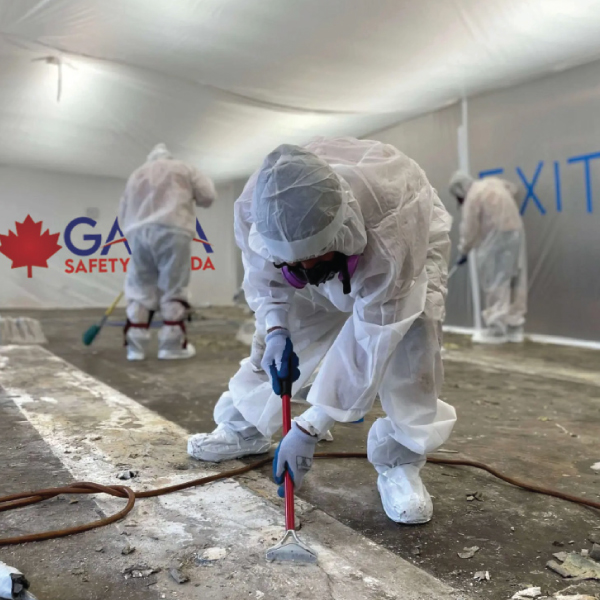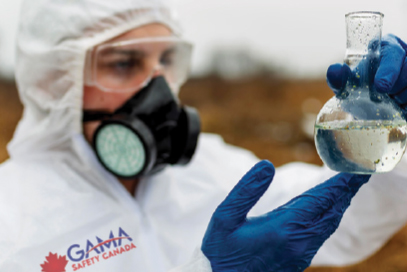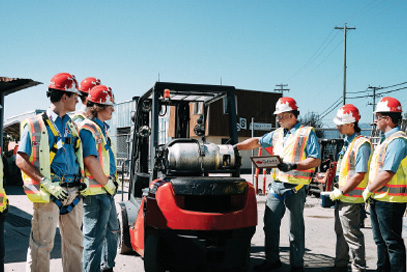Advanced Techniques for Safe
Asbestos Handling and Removal.
Asbestos Level 2 training is designed for workers involved in the removal and handling of higher-risk asbestos materials. This advanced training covers the proper use of specialized equipment, containment procedures, and decontamination techniques to reduce the risk of exposure and ensure the safety of both workers and the surrounding environment.
Advanced Techniques for Safe
Asbestos Handling and Removal.
Asbestos Level 2 training is designed for workers involved in the removal and handling of higher-risk asbestos materials. This advanced training covers the proper use of specialized equipment, containment procedures, and decontamination techniques to reduce the risk of exposure and ensure the safety of both workers and the surrounding environment.
OUR PARTNERS AROUND THE WORLD
OUR PARTNERS AROUND THE WORLD
OUR PARTNERS AROUND THE WORLD
OUR PARTNERS AROUND THE WORLD
OUR PARTNERS AROUND THE WORLD
OUR PARTNERS AROUND THE WORLD
OUR PARTNERS AROUND THE WORLD
OUR PARTNERS AROUND THE WORLD
OUR PARTNERS AROUND THE WORLD
OUR PARTNERS AROUND THE WORLD
OUR PARTNERS AROUND THE WORLD
OUR PARTNERS AROUND THE WORLD
OUR PARTNERS AROUND THE WORLD
OUR PARTNERS AROUND THE WORLD
Containment
Techniques
Learn proper procedures for sealing asbestos work areas, including use of negative air systems and secure barriers.
Decontamination
& PPE Removal
Follow critical steps for safely removing contaminated gear and performing worker decontamination after asbestos exposure.
Asbestos Level 2 Safety Resources
WorkSafeBC guide to Asbestos Level 2 training requirements and certification standards.
Practical control measures and protective steps for Asbestos Level 2 abatement work.
Government of Canada report on exposure prevention programs relevant to Asbestos Level 2 work.
Federal asbestos management standard outlining Asbestos Level 2 safe work practices in government buildings.
Overview of training pathways and Asbestos Level 2 certification requirements.
Official WorkSafeBC Asbestos Level 2 training and licensing information.
Locate approved Asbestos Level 2 training providers in your area.
Health Canada information on the dangers of exposure, supporting Asbestos Level 2 awareness training.
WorkSafeBC overview of all asbestos training certifications with details on Asbestos Level 2.
Asbestos Level 2 Essentials
Handling Procedures for Moderate-Risk Asbestos Work
Working with asbestos-containing materials requires precision, protection, and compliance. Asbestos Level 2 training equips workers with the critical skills to manage moderate-risk asbestos activities, including cleanup, repair, and removal under strict safety guidelines. This essential training helps ensure workers recognize hazards, use the correct personal protective equipment (PPE).

ASBESTOS LEVEL 2
Asbestos Level 2 Essentials:
Staying Safe While Handling High-Risk Asbestos Materials.
Working with Asbestos Level 2 materials involves elevated risk and requires advanced safety training. This level of work includes activities that disturb friable or high-risk asbestos-containing materials, such as pipe insulation, sprayed coatings, or boiler wrap, where fibres are easily released into the air.
This training prepares workers to follow strict containment procedures, use specialized personal protective equipment (PPE), and implement decontamination protocols. Participants learn how to assess the work area, set up negative air pressure enclosures, and follow all legal requirements outlined in provincial regulations and CSA standards.
By mastering safe work practices and regulatory compliance, trained workers help prevent exposure, protect co-workers, and reduce the risk of long-term health effects like asbestosis or mesothelioma. Asbestos Level 2 certification is essential for professionals tasked with high-risk asbestos removal and abatement.
ASBESTOS LEVEL 2 Definition
Asbestos Level 2 training is an advanced course designed for workers who are directly involved in the disturbance, removal, repair, or cleanup of asbestos-containing materials (ACMs). This training goes far beyond awareness and prepares individuals to perform hands-on tasks under controlled and regulated conditions. Participants learn how to safely handle, contain, and dispose of asbestos while minimizing the risk of fiber release and personal exposure.
The course includes in-depth instruction on work area preparation, use of negative pressure enclosures, decontamination units, safe removal techniques, and use of specialized personal protective equipment (PPE) such as full-face respirators and disposable suits. Asbestos Level 2 training is required for anyone engaged in moderate- to high-risk asbestos work, and completion is often mandatory before workers can legally participate in abatement projects or emergency response involving disturbed ACMs.
Workers who are tasked with removing, repairing, encapsulating, or disturbing friable asbestos materials are required to take Asbestos Level 2 training. This includes asbestos abatement technicians, demolition workers, renovation crews, and anyone performing activities that may generate airborne asbestos fibers through direct manipulation of ACMs. Supervisors overseeing these activities may also be required to take this training.
Unlike Asbestos Level 1, which is meant for incidental contact, Level 2 training is compulsory for those whose work inherently involves exposure to asbestos. Workers must be trained prior to starting such work and must maintain valid certification. Employers must also ensure that any subcontractors or temporary workers involved in asbestos-related work have completed the appropriate training.
Asbestos Level 2 training teaches a wide range of technical and safety skills that are essential for working with asbestos in compliance with regulations. Key topics include establishing containment zones, constructing negative pressure enclosures, performing risk assessments, and employing wet removal techniques to reduce fiber release. Trainees also learn how to properly use HEPA-filtered vacuums, air monitoring equipment, and decontamination showers.
A major component of the course is the correct use of PPE, including donning and doffing procedures, respirator maintenance, and fit testing. Workers are trained in emergency procedures, spill cleanup, and how to safely bag, label, and dispose of contaminated materials. The course typically includes hands-on exercises and a final evaluation to ensure participants can apply their knowledge in real-world scenarios.
The main difference lies in the level of exposure and responsibilities involved. Asbestos Level 1 training is designed for awareness and is suitable for workers who may encounter asbestos incidentally, but are not authorized to disturb or remove it. It teaches how to recognize asbestos-containing materials (ACMs) and how to avoid exposure.
In contrast, Asbestos Level 2 training prepares workers to actively handle or disturb ACMs under controlled conditions. This includes removal, repair, encapsulation, or cleanup of friable asbestos materials work that involves a higher risk of fiber release. Level 2 training includes practical skills, advanced safety procedures, legal compliance, and PPE use. Workers must complete Level 2 training before they are legally allowed to participate in abatement or high-risk asbestos work.
Asbestos Level 2 training is crucial because it equips workers with the knowledge and skills necessary to prevent airborne fiber release and exposure during high-risk tasks. Improper handling of asbestos can result in fiber contamination of the worksite, exposing not only the worker but also colleagues, nearby occupants, and the general public. The health risks associated with asbestos such as mesothelioma and lung cancer are severe and irreversible, making proper training an essential part of prevention.
The training ensures that workers follow best practices for containment, decontamination, waste handling, and personal protection. It also prepares them for emergency response, such as managing an accidental release or PPE failure. Without Level 2 training, workers are more likely to make dangerous mistakes that can lead to regulatory violations, legal liability, and long-term health consequences.
Competency in Asbestos Level 2 training is typically assessed through a combination of written exams, hands-on exercises, and instructor evaluations. The written portion tests knowledge of legislation, hazard recognition, control measures, and emergency procedures. Hands-on assessments evaluate the worker’s ability to set up containment zones, use PPE correctly, perform safe removal techniques, and follow decontamination protocols.
Some provinces or employers may require additional certification or evaluation by a third-party organization to validate that the worker is fully qualified. Successful completion is often documented through a certificate that includes the trainee’s name, training provider, course content, and expiration date. Employers must retain these records and ensure refresher training is completed as required by law or company policy.
ASBESTOS LEVEL 2 Legislation
Yes, Canadian occupational health and safety laws require that any worker who engages in moderate or high-risk asbestos work must receive Asbestos Level 2 training. Provincial regulations such as WorkSafeBC Part 6, Ontario Regulation 278/05, and Alberta OHS Code clearly define the types of work considered high risk, such as removal of friable asbestos or disturbance of materials likely to release airborne fibers. These tasks require advanced training beyond basic awareness.
Level 2 training is mandated for legal compliance and is a central part of any Asbestos Exposure Control Plan (AECP). Employers are responsible for ensuring that workers receive this training before starting any related task. Failure to do so can result in penalties, stop-work orders, or even criminal charges in cases where untrained personnel are exposed to asbestos.
Canadian OHS legislation generally classifies asbestos work into low-risk, moderate-risk, and high-risk categories based on the likelihood of fiber release. High-risk asbestos work typically includes tasks such as removing sprayed-on fireproofing, cutting or grinding friable insulation, or demolishing ACM-containing materials without proper containment. Moderate-risk work might involve repairing ACMs or removing non-friable materials in a way that could generate dust.
The classification affects the type of controls and level of training required. Asbestos Level 2 training is necessary for any moderate- or high-risk work, as defined by legislation. These definitions help employers determine what level of training and equipment is needed and form the basis for compliance assessments by regulatory agencies.
Asbestos removal and abatement are governed by federal, provincial, and territorial regulations. Key examples include:
WorkSafeBC – Part 6: Substance Specific Requirements
Ontario Regulation 278/05 – Designated Substance: Asbestos
Alberta Occupational Health and Safety Code – Part 4: Chemical Hazards
These regulations specify how asbestos must be handled, who can perform the work, what kind of training is required, and what controls must be in place. They also reference applicable standards such as CSA Z94.4-18 (Respirator Selection and Use) and CSA Z1006 (Confined Spaces). All removal work must be performed by trained individuals under proper supervision, using containment, air monitoring, PPE, and decontamination procedures.
Employers must maintain detailed documentation of Asbestos Level 2 training for every employee performing moderate- or high-risk asbestos work. Required information includes the worker’s full name, training date, course content, name of the training provider, and certificate number if applicable. These records must be retained and updated in accordance with provincial regulations and made available during inspections or audits.
In addition, employers must include training documentation as part of their Asbestos Exposure Control Plan (AECP) and ensure that it aligns with job-specific hazard assessments. If refresher training is required—either annually or after regulatory changes—new documentation must replace the expired records to remain in compliance. This administrative step is critical for legal protection and audit readiness.
Enforcement of asbestos-related legislation is carried out by provincial occupational health and safety authorities, such as WorkSafeBC, Ontario Ministry of Labour, and Alberta Labour and Immigration. These agencies have the authority to conduct site inspections, review training records, and assess work practices. Inspectors may visit both planned abatement projects and emergency work sites to verify whether legal and safety standards are being followed.
If inspectors find that untrained personnel are involved in asbestos work, they can issue stop-work orders, levy fines, or require corrective actions. In cases of gross negligence or harm to workers, enforcement bodies may pursue legal action, including criminal prosecution. Enforcement agencies prioritize asbestos compliance because of the serious health implications and long latency periods of asbestos-related diseases.
Non-compliance with asbestos training laws—especially failure to provide Level 2 training for workers engaged in abatement—can result in substantial legal and financial penalties. Fines vary by province but can reach tens of thousands of dollars per infraction, particularly if work is performed without proper containment or by untrained workers. These fines may increase in severity for repeat violations or if worker exposure has occurred.
In addition to regulatory fines, employers may face lawsuits, workers’ compensation claims, or criminal charges. In the event of a serious incident or occupational disease claim, failure to train workers properly becomes a major liability. Insurance providers may refuse to cover incidents where negligence is proven. For these reasons, Asbestos Level 2 training is not just a legal formality—it is a critical safeguard for workers, organizations, and the public.
Other Courses You May Be Interested In.
Workers who complete ASBESTOS LEVEL 2 training often continue their safety education with the following programs:"
More Courses
Online Courses
"Explore & Book Online Courses!
Have a Question?
"We’re here to help! Click the button to get in touch."


